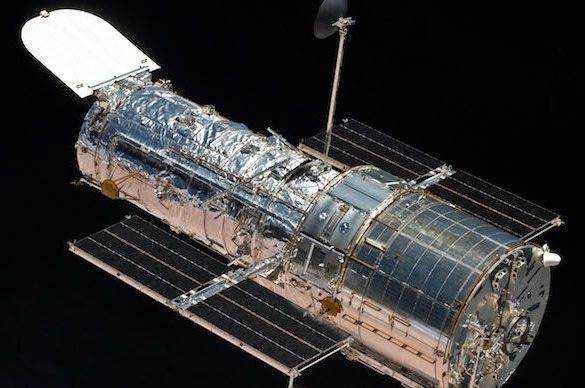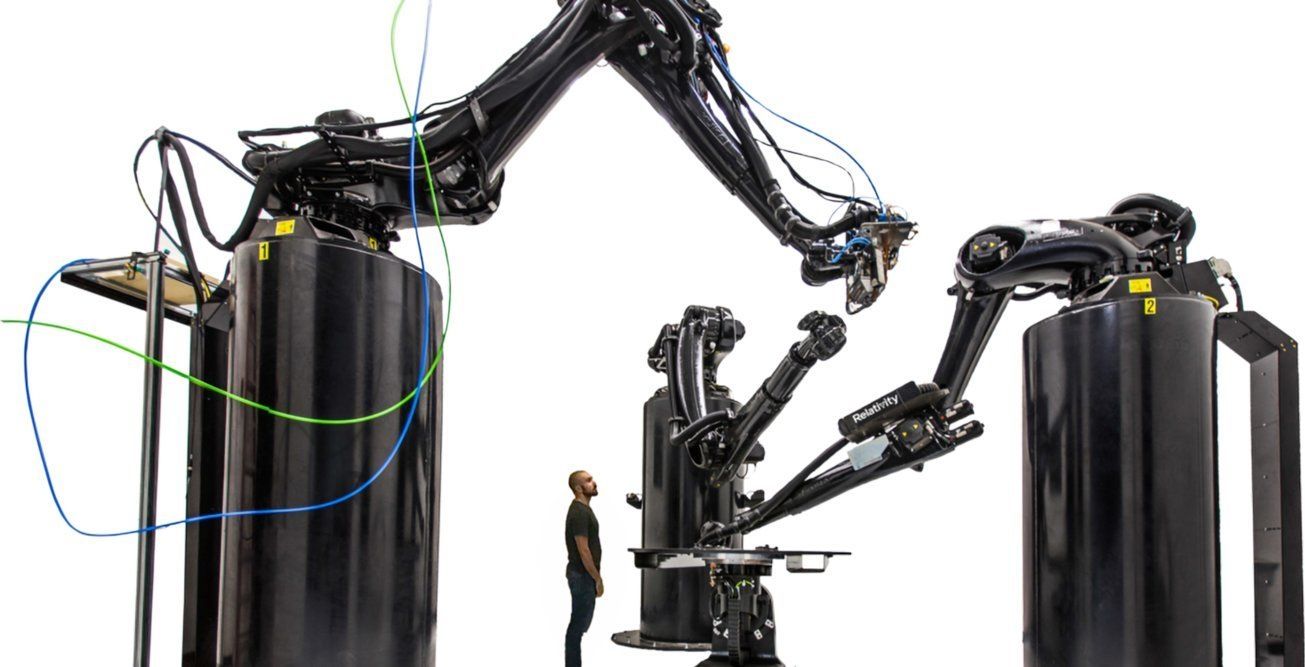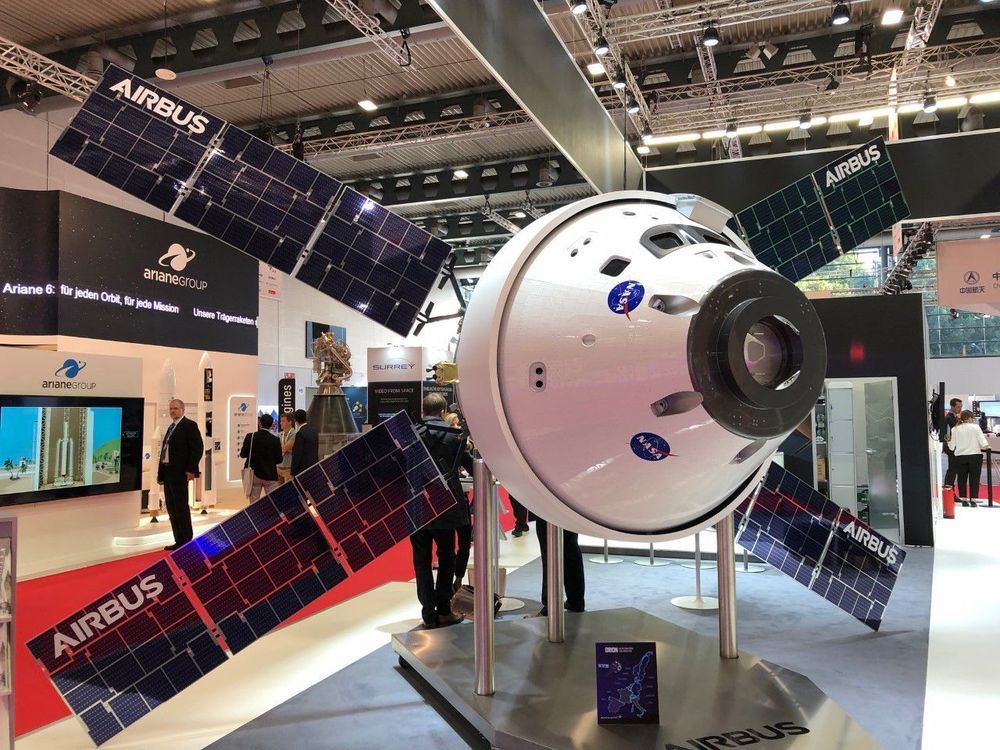ParkerSolarProbe became the closest-ever spacecraft to the Sun when it passed within 26.55 million miles of the Sun’s surface. Find out more: https://go.nasa.gov/2Q4QB9p


ParkerSolarProbe became the closest-ever spacecraft to the Sun when it passed within 26.55 million miles of the Sun’s surface. Find out more: https://go.nasa.gov/2Q4QB9p

Systems are a go for NASA’s Hubble Space Telescope after the successful recovery of a backup gyroscope replaced one that failed earlier this month.
The spacecraft entered safe mode on Oct. 5, remaining in a stable configuration for three weeks; HST returned to normal operations late on Friday.
It completed science observations the next day, using the Wide Field Camera 3 instrument to capture infrared wavelengths of a distant, star-forming galaxy.
SpaceX has confirmed that the two large propellant tanks now present at its Boca Chica, Texas facilities will likely to be the last major ground tanks needed to enable the first test flights of the upper stage of its next-gen BFR rocket, known as the Big Falcon Spaceship (BFS).
Expected to begin as soon as late 2019, SpaceX executives have recently reiterated plans for a campaign of hop tests for the first full-scale spaceship prototype, in which the ship will follow in the footsteps of its Falcon 9-based Grasshopper and F9R predecessors.
SpaceX Project Making Progress at Boca Chica Beach Site http://www.krgv.com/story/39360667/spacex-project-making-pro…sw.twitter
Nuclear engine (aka YaEDU):
A key component of Russia’s future nuclear space propulsion system, which may revolutionize long-range exploration of the solar system, has been successfully tested, RIA Novosti reported.
Since at least 2009, Russian space and atomic engineers have been developing a special space propulsion system, which uses a 1 megawatt nuclear fusion reactor as source of energy. According to a work competition report, published on a website tracing public spending in Russia and reviewed by the news agency, one of the crucial elements of the system, which is responsible for cooling down the reactor, has been successfully tested.
The nuclear engine, which is known by its abbreviation YaEDU (Nuclear Propulsion and Power Engine System) consists of a small fast-neutron nuclear reactor, an electricity generator fed by the reactor’s heat and space thrusters powered by the generator.
Blue Origin recently received a large cargo ship, which they will retool to retrieve the first stage of their reusable New Glenn rocket.

The Mars Society is holding a special contest called The Mars Colony Prize for designing the best plan for a Mars colony of 1000 people. There will be a prize of $10,000 for first place, $5,000 for second and $2500 for third. In addition, the best 20 papers will be published in a book — “Mars Colonies: Plans for Settling the Red Planet.”
The Mars colony should be self-supporting to the maximum extent possible – i.e. relying on a minimum mass of imports from Earth. In order to make all the things that people need on Earth takes a lot more than 1000 people, so you will need to augment both the amount and diversity of available labor power through the use of robots and artificial intelligence. You will need to be able to both produce essential bulk materials like food, fabrics, steel, glass, and plastics on Mars, and fabricate them into useful structures, so 3D printing and other advanced fabrication technologies will be essential. The goal is to have the colony be able to produce all the food, clothing, shelter, power, common consumer products, vehicles, and machines for 1000 people, with only the minimum number of key components, such as advanced electronics needing to be imported from Earth.
As noted, imports will always be necessary, so you will need to think of useful exports – of either material or intellectual products that the colony could produce and transport or transit back to Earth to pay for them. In the future, it can be expected that the cost of shipping goods from Earth to Mars will be $500/kg and the cost of shipping goods from Mars to Earth will be $200/kg. Under these assumptions, your job is to design an economy, cost it out, and show that after a certain initial investment in time and money, that it can become successful.



Towards this goal, I have founded the company, Made of Mars, to develop the technology we need to build beyond Earth. Made of Mars is working to transform the materials and minerals that we know are on the Moon, Mars and asteroids throughout our solar system into products that we can use today. This innovation will be used to build the space civilization of tomorrow.
Made of Mars will begin by learning to build with volcanic basalt. Basalt is the same lava rock that forms Hawaii, Iceland and countless volcanoes around Earth. Basalt is the most common material on Mars and is widespread throughout Earth and much of the solar system. Starting with these rocks, basalt is mined, re-melted, and pulled into thin threads which are then woven into fabrics. Made of Mars is transforming these basalt fabrics into products you can use today. The first basalt product line has been launched on Kickstarter where these volcanic rocks will be highlighted through a series of wallets and computer cases. These simple products will showcase the material and process. Made of Mars aims to encourage development of this material, setting the stage for space necessities to eventually be built from basalt, from suits to spaceships.
Building for a future beyond Earth does not mean abandoning our planet. We have always been a species of explorers and migrants, but remain nostalgic for our roots. Learning to build with basalt will both be key for a future beyond Earth and our future on it. Our technological advancements have improved the lives of billions while putting a terrible strain on the resources and environments of Earth. Basalt may be a solution toward sustaining our home planet. It is one of the most abundant and widespread resources on Earth. Basalt is continuously erupting on the surface and requires no chemicals to process. Unlike cotton, it does not compete with food production. Unlike synthetics, it does not come from fossil fuels. After it is used, basalt can be remelted and reused. Discarded basalt would naturally weather and recycle back to new volcanoes, as is the natural cycle of basalt.

SRI Newsletter #06 2018 Great success both for the public and for the speakers, despite the enrollment fees definitely out of budget for many: more than 6300 registered participants, of which almost 50% very young, more than 2000 papers presented in the various symposia. The title of the Congress was very interesting: “Involving everyone”. This gave the impression that there was plenty of space at the Congress for the themes of civil development in space. The attention to the impetuous development of the NewSpace sector is now felt everywhere, and the most important global space congress could not avoid being impacted. After all, it is thanks to the growth of the NewSpace sector if the IAF Congress has recorded this remarkable success. But which were the predominant themes of the Congress? Has the promise announced in the title been kept? In part, yes, but a lot of work remains to be done. And the main NewSpace entrepreneurs didn’t come to Bremen. Read the whole article.
The 69th Congress of the International Astronautical Federation took place in the halls of the Bremen exhibition center from 1 to 5 October.
Great success both for the public and for the speakers, despite the enrollment fees definitely out of budget for many: more than 6300 registered participants, of which almost 50% very young, more than 2000 papers presented in the various symposia. The title of the Congress was very interesting: “Involving everyone”. This gave the impression that there was plenty of space at the Congress for the themes of civil development in space. The attention to the impetuous development of the NewSpace sector is now felt everywhere, and the most important global space congress could not avoid being impacted. After all, it is thanks to the growth of the NewSpace sector if the IAF Congress has recorded this remarkable success. But which were the predominant themes of the Congress? Has the promise announced in the title been kept? In part, yes, but a lot of work remains to be done.
One aim was to “include everyone”, for example, in the exploration of the Moon. And we have seen some concrete cases of inclusion. The company Part Time Scientists, earlier in the context of the Lunar X-Prize, and then with the development of subsequent innovative projects, has put in place a lunar exploration project, in which some industries not belonging to the aerospace sector are involved as technological partners, as well as sponsors, such as Audi, Nokia, Vodafone. Of course, so far we are talking about exploration, mainly robotics, and not about industrial settlements on the Moon. The Moon Village Association thinks about that and presented their initiatives in a context that is becoming more and more receptive and interesting for many.